Terrassa: 214,000 inhabitants and the fourth largest city in Catalonia, but you haven’t heard of it. Forget Barcelona, iced by the modernista architect Gaudí – but with signs, in English, forbidding urinating in public. Forget the quaint fishing village of Calella de Palafrugell, and the Costa Brava – with its multilingual waiters. Terrassa is the real Catalonia, untainted by tourists.
But being authentic has its downside. Think: the Spanish equivalent of Basingstoke. After all, Basingstoke is authentically English – though not many people’s destination of choice. So why did we pick a holiday in suburbia? Because it was free, literally. We had signed up for a house swop, without worrying too much about the details.
On our first day we walked to where we thought the town centre should be, through anonymous housing estates, past tawdry rows of shops and their fast-food “Frankfurts”. Their ubiquity might well explain the excessive number of dental clinics, but fails completely to account for the laser epilation parlours.
The next day, however, we found the tourist information office. Even knowing its address, and standing a few paces from the entrance, we had missed it. Inside we discovered that there were hidden treasures disseminated around the town. Just like the tourist office, you have to search them out.
And they are numerous. Not one, but two paleo-Christian churches. A castle, the tallest climbable chimney in the world, a 200m-long outdoor swimming pool. Scores of turn-of-the-century modernista buildings. And we were the only tourists. Nobody else was carrying a camera – when I pointed mine across the road to capture a façade, a motorist actually stopped, so that his car wouldn’t get in the way. Terrassa grew on us.
The highlight for me was the Museum of Technology, in a modernista factory, with eye-shaped windows in the roof, half-winking at the sky. I am back in my childhood, in a weaving mill in Leeds with my grandmother. That smell of coal dust is here as well, still lingering in the boiler room. The gleaming steam engine could shudder into motion at any time, the drive bands distributing its strength across the factory ceiling and then down to the looms. But where is the greasy smell I remember? I thread a few strands of soft fleece between my fingers. Yes, there it is: lanolin. And with a sudden rush, all the clamour comes back to me: the crashing of the looms sea-sawing as they pull the warp tight and release it again. The whirring of the bobbins. The clank of the shuttle at the end of each row.
That moment was worth all the sun-tanned beach holidays in Spain. I could only have found it in post-industrial, suburban Terrassa.



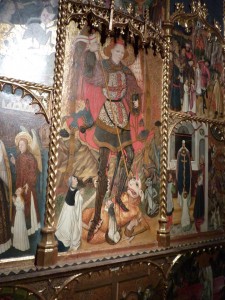

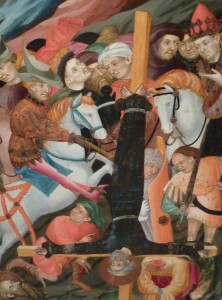
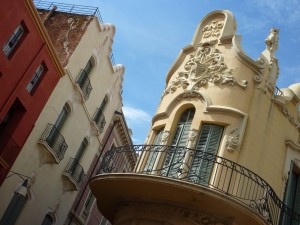
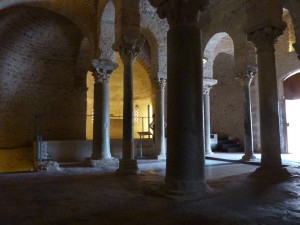
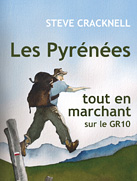






Footprints on the mountains